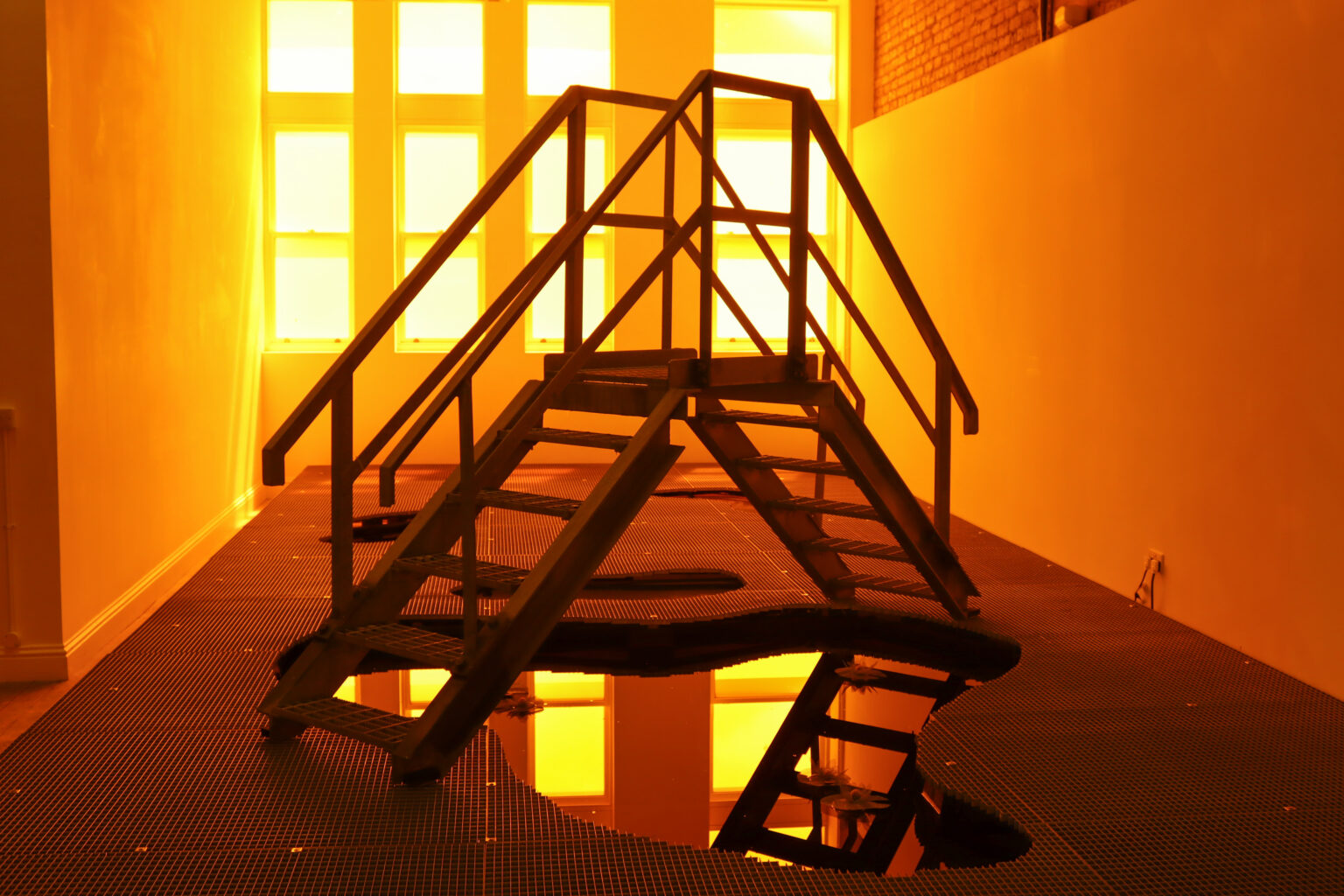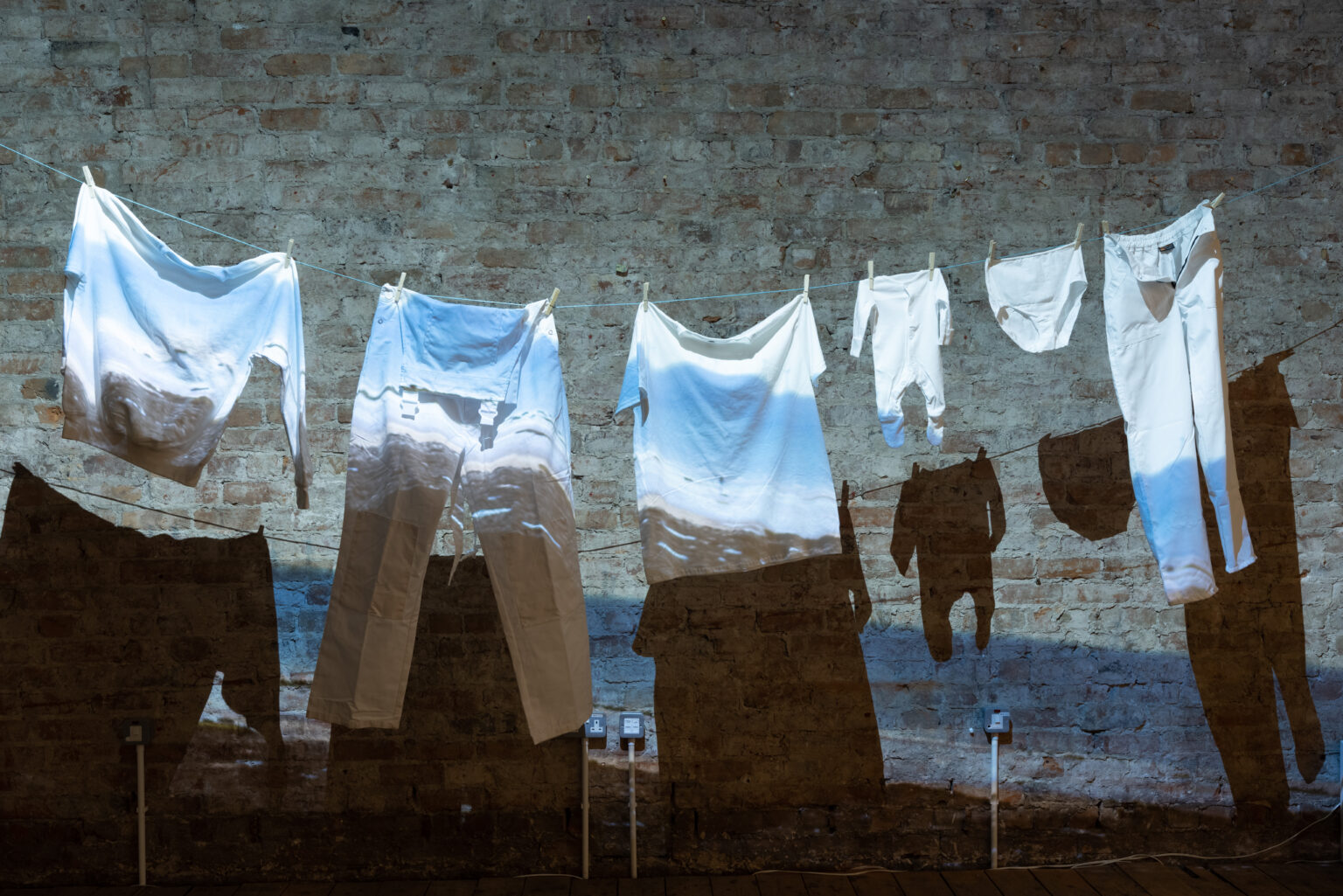Sankey: Lives Through the Lens is a two-year curatorial project by Signal Film and Media, an arts charity based in Barrow-in-Furness. The project focusses on the Sankey Photography Archive, a vast image repository documenting the lives of people in the town and wider region, beginning in the early twentieth century and spanning over seventy years. As a part of this programme, Signal are presenting two new outdoor photography exhibitions inspired by the archive, running concurrently in Barrow until late August: The Binding Tide by Nicholas J.R. White and The Workers by Dawn Parsonage.
The Workers takes the form of a photography trail through Barrow that, for the visitor arriving by train, conveniently utilises the station as one of the sites. Here, Parsonage has two photographic installations, one in each of the two lifts that service the station. In these outcomes, an image from the archive showing historical working life in Barrow is set opposite an image of people at work in Barrow today, as photographed by the artist. One of the lift installations features an archival image of a female paper mill worker, whilst opposite is Parsonage’s photograph of a female hairdresser in the present day. Seeing the images in a lift makes for an intense viewing experience, but these everyday settings do mean the exhibition will be seen by people who might not often visit gallery spaces. Across these installations, Parsonage has attempted to create formal similarities between the archival and present-day photographs. In this instance, the hairdresser reflects the pose of the paper mill worker, these echoes creating a temporal parallel, connecting the images and the people in them across time. A form of solidarity emerges between these workers, separated by a hundred years, through these connections.

The trail leads to Barrow library, where I find Parsonage’s next images installed in the reception area, printed at a larger scale on metre high boards. The archive image features twelve men working in a boot making factory in the early twentieth century. Opposite, in the present-day image, Parsonage has photographed seven workers at a local printer, standing around a Heidelberg printing press, an object which has echoes of the Edwardian era. The archival photograph is of particular note, the people appearing ‘strangely familiar’ as a library archivist described them to me, uncanny and unnerving. Looking at the men’s faces you can imagine them knocking around Barrow today, their smirks and giggles at being photographed betraying their shyness, their attitudes towards the camera seemingly not that far removed from present-day reactions.
Parsonage’s installation in the Cavendish Street ginnel, a narrow passage between two buildings, has a rawer feel. The images are pasted up as posters, mixing with graffiti and the everyday life of the street. The archival image documents a vast factory with rows of machines operated by female workers, who pose for the photograph with blank expressions. Across the passage, the artist has documented the people of Cumbrian Sewing and Crafts, a business located in the town. The expressions on the women’s faces mirror the workers in the archive image. During a tour led by the artists, Parsonage again touches on temporal concerns, these women ‘looking at each other, across time’. A theme gradually emerges through these installations, centring on the importance of these worker’s lives, both past and present. In a period of such deep social and political crisis this theme resonates: perhaps we should look more to the workers in remaking and unfolding the social and economic landscape of the town, placing more value on their contribution to its formation and future development.

The route across Barrow leads to the town hall and Nicholas J.R. White’s The Binding Tide. White has utilised the town hall courtyard to display the outcomes, three images situated in each corner, with twelve images in total. The artist, who is based on the Isle of Skye, has taken a different approach to Parsonage, distilling various themes from the archive and his exploration of Barrow, which include landscape, the local community and Barrow’s relationship to water. Through this approach, White has documented people from the town and surrounding areas, all the while attempting to emphasise the ‘quiet beauty’ of place.
One striking photograph shows a horse and rider standing still on the wet sands of Barrow’s Coast Road. I ask White about the image and he mentions that it emerged directly from the research process. He came across the rider whilst exploring the area and they agreed to be photographed. The image captures a different part of life in Barrow, away from the industries so often represented in the archive, such as naval shipbuilding and paper manufacturing. This seems central to White’s response to place – considering the idiosyncrasies of people’s lives. Another work shows a deep-sea diver in full rig, ready to explore the depths. It’s an awe-inspiring photograph, with the subject about to take a walk along the seabed, but I also found it an amusing image, highlighting the interesting and peculiar activities of these coastal lives, captured by the artist in an almost incidental way.

White has tried to steer the images away from more typical representations of the town but one image, a photograph of a Royal Navy cadet, alludes to those histories. It is a beautiful image, a shaft of light cast across the face of the cadet, looking upward, seemingly to some other meaning. In a subtle way, the photograph alludes to the military industry present in a place such as Barrow: the vast shipbuilding yard, which can be seen from the exhibition area, and the globalised forces that infrastructure represents, inevitably intersect the singular life of the cadet. It’s a quiet and thought-provoking reference to the naval production in the town and the inherent power of that industry in people’s lives.

Place-based artistic practices such as these inevitably require a high degree of reflexivity by the participating artists and curators. The practitioners need an awareness of their own position and power, as these processes could, potentially, become patronising or extractive. In this instance, however, both artists have led workshops and art activities with the people of Barrow. For example, White collaborated closely with participants to produce the photographs and visual narratives that reflect on the town which were published by Signal in a small, printed pamphlet entitled, Place: A Collection of Photographic Stories. There is texture in these outcomes, with Tieghan LeRoy’s images of landscape and Alex Taylor’s focus on public and private transport both emphasising the beauty to be found in the town.
As with all archives, what is preserved and what is discarded is of deep significance, socially and politically. White’s outcomes move away from the industries more typically represented in the archive, such as shipbuilding and paper manufacture, instead alluding to a fragmented beauty, centred on the people of the area. By focussing on the more subtle ways in which the town’s relationship with water has shaped place, the artist foregrounds the everyday lives of people over the military industries that often dominate perceptions of the town. Parsonage’s works respond more closely to the archive images, uniting two generations of Barrow’s workforce separated by a hundred years and, in doing so, alludes to the importance of working people in the town’s development and future. Through these responses to the archive, these two exhibitions do find mutual ground, as the works unfold across the streets and buildings of Barrow: the importance of the everyday lives of Barrovians, past and present, in the social and economic life of the town.
The Binding Tide and The Workers, 10 July – 31 August 2025, various sites, Barrow-in-Furness, is part of Sankey: Lives Through the Lens, 2024-2025, Signal Film and Media.
Anthony Ellis is an artist and writer based in Manchester.
This review is supported by Signal Film & Media.
Published 02.08.2025 by Jazmine Linklater in Reviews
1,381 words




